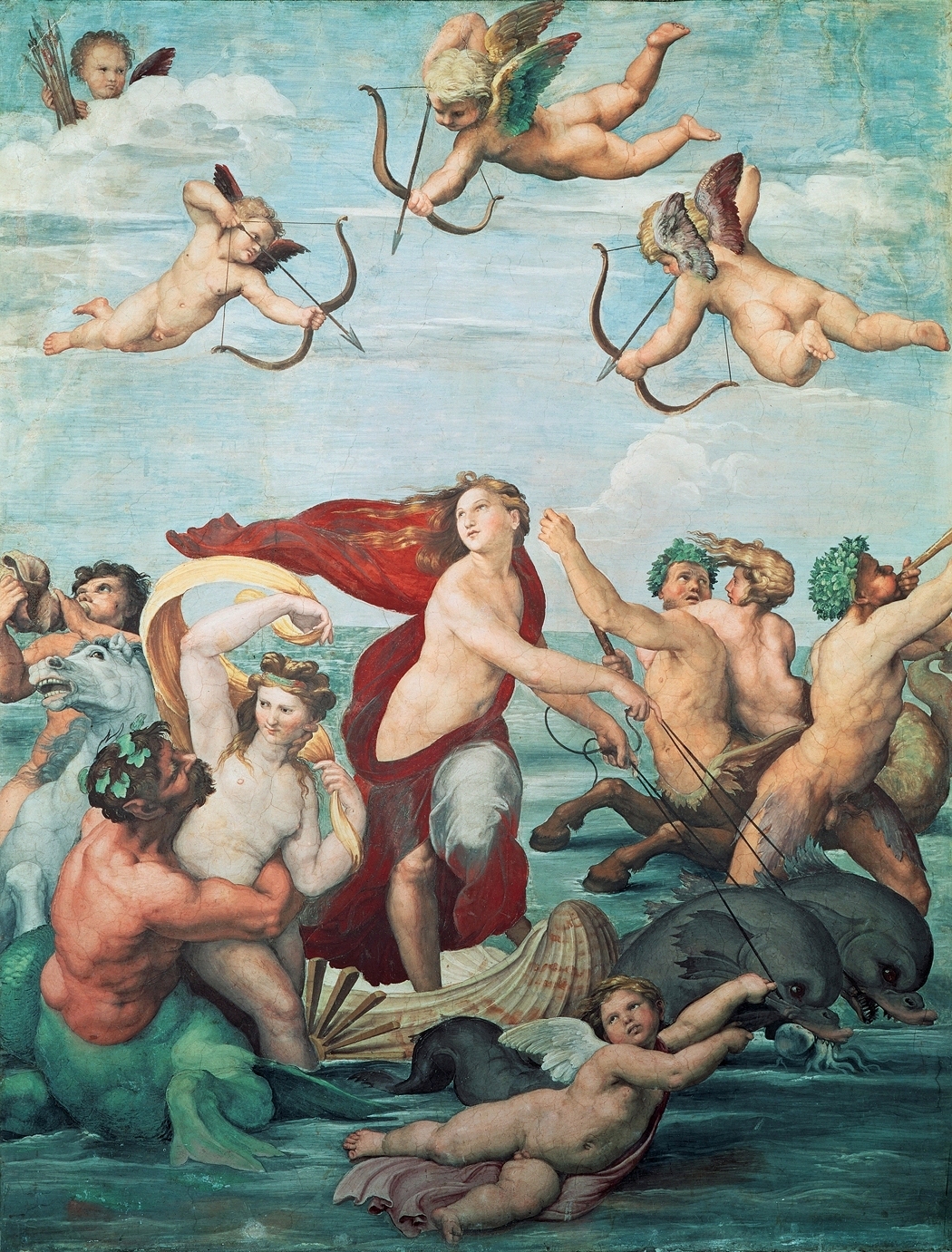 |
| The School of Athens, Raphael, 1511 |
Raphael Sanzio (1483-1520) brought balance and harmony to contrast
Michelangelo’s deep emotional depictions and
da Vinci’s blurred serenity. A native of Urbino, Raphael was first trained by his father, but then sent to learn from the well-known
Perugino. Raphael undertook Perugino’s smooth and cloying style, but soon absorbed the techniques of the established Florentine artists, da Vinci and Michelangelo. Raphael sold his art to noble and merchant families, a market available due to the immense costliness and demand for the art of his superiors. Raphael differed from da Vinci and Michelangelo by his lack of anatomic detail and
chiarascuro, the dramatic contrast between light and darkness in his works, but had respect for his rivals nonetheless through his apparent mimicking later on in his career.
 |
The Parnassus, Raphael, 1511
|
Raphael’s greatest contribution to the Renaissance was his
School of Athens (1510), which displayed the great interest in classic Greek culture. He integrated the philosophers with the modern artists, implying that human accomplishment was universal and interconnected. This was similarly shown through
The Parnassus (1511), the final part of the trilogy commissioned by Pope
Julius II. Apollo is the center of the painting, which presents the four categories of human knowledge: law, poetry, philosophy, and religion. The first painting created of the three was the
Disputation of the Sacrament (1511), which featured heavenly biblical figures watching over a mortal debate over
transubstantiation. Much of Raphael's work was religious, but that a Pope had such intrigue in a movement based on classicism and openness instead of strict religious doctrine showed the extent of the Renaissance's appeal.
 |
The Transfiguration, Raphael, 1520 |
His
Triumph of Galatea (1513) suggests influence from Michelangelo with more attention to anatomic detail, specifically through similarities in his own cupids and the characters on the ceiling of the
Sistine Chapel in Rome. It is said that he was shown Michelangelo's unfinished work in the Sistine Chapel by his friend and mentor,
Bramante, and infused these observations into his later art. Raphael’s last great work was
The Transfiguration (1517), which offers a preview to the powerful and dark
Baroque period. This painting certainly pleased his patron of the time, Cardinal
Giulio de Medici. The contrast between the light of Jesus and the darkness, an excellent use of chiarascuro, shows a polar change from his original style. The image of mankind in despair is a deviance from the Renaissance ideals, demonstrating the overlap among Renaissance art and that of the next two eras,
Mannerism and Baroque. However, the idea of perfection departing but leaving behind hope and human unity for men to seek what they had lost still may subtly manifest Renaissance philosophy. Due to his short life, Raphael lacked the time to develop that Michelangelo and da Vinci had, but his work remains some of the most spectacular of the Renaissance. Viewed as simpler and therefore easier to emulate than his peers, Raphael is often under-appreciated. However, the deeper meanings behind his pieces make them possibly the most fascinating of the entire era.
 |
Triumph of Galatea, Raphael, 1513
|
.jpg) |
| Disputation of the Sacrament, Raphael, 1510 |




.jpg)




.jpg)
I had no idea some popes were so into the whole classics side of the Renaissance. I always thought they were reluctant to sponsor the whole classic movements because of fear of losing power in Italy.
ReplyDeleteI am fairly certain that we learned that the popes were not threatened by the introduction of pagans into art.
ReplyDeleteVenus wouldn't have approved of this passive aggressiveness!!!
ReplyDelete